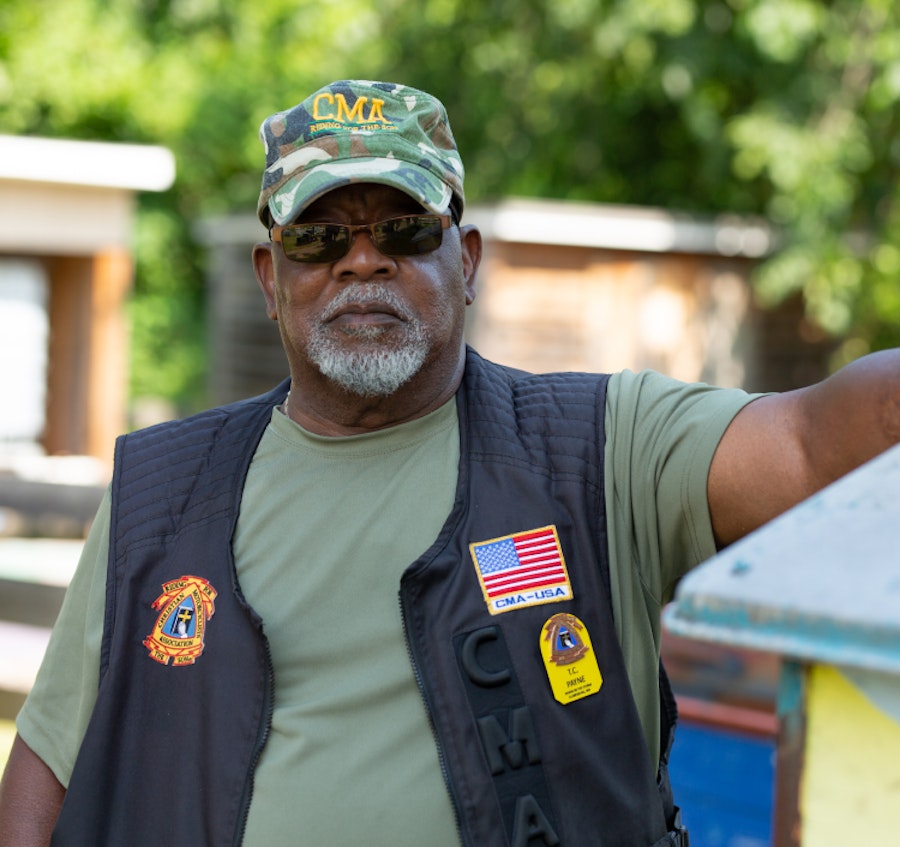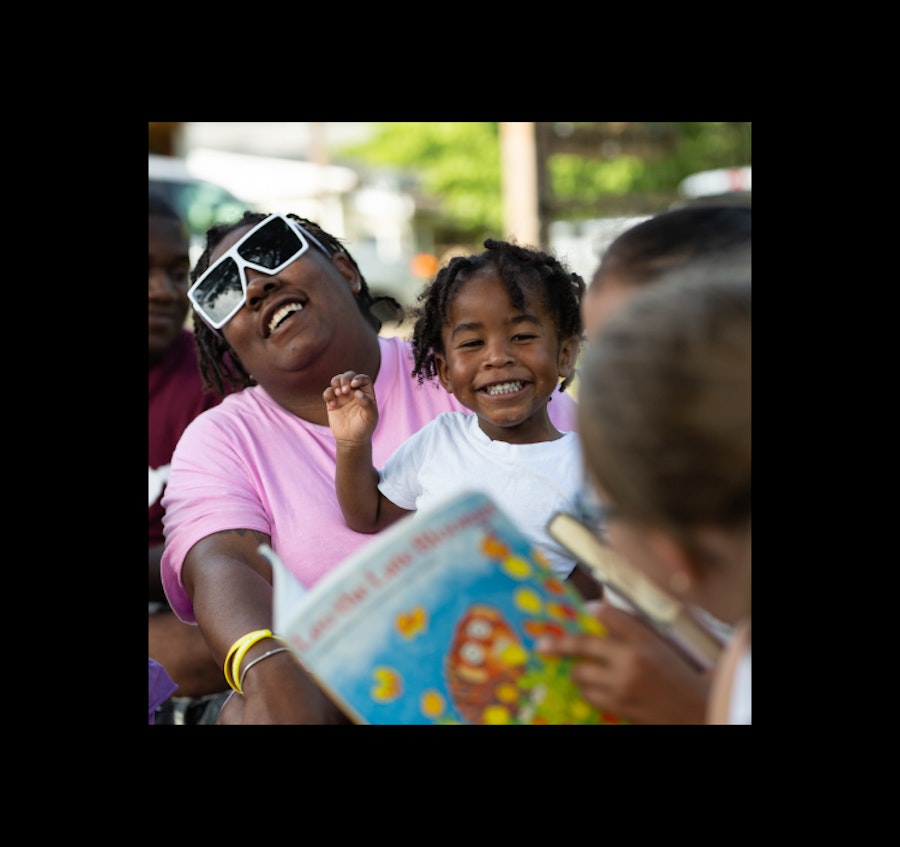West Virginia Community Development Hub
Encouraging West Virginians to see themselves as community leaders
The challenge
In one pervasive—and inaccurate—narrative, West Virginians living in poverty are characterized as lacking agency or refusing to take actions in their own best interests. Rural Appalachia is often depicted as a hopeless place that is frozen in time. In fact, the opposite is true: West Virginia is teeming with diverse, creative, hardworking leaders who are collaborating to chart a new course for their communities and to help break the cycle of intergenerational poverty. It’s time to tell the real story.
The opportunity
For over a decade, West Virginia Community Development Hub (The WV Hub) has supported community leaders to advance their visions for locally-led community economic development. They arrived at a key insight: local leaders don’t always see themselves as “leaders,” in part because they don’t fit into the stereotypically portrayed identity or image of a leader. The WV Hub decided to celebrate these under-appreciated leaders, lifting up their stories to help change West Virginians’ self-conceptions. To this end, they teamed up with a local creative agency to produce a multimedia story series that put a spotlight on dozens of local leaders and organizations, along with a leadership toolkit for people to use once they became inspired by the stories.
The approach
West Virginians have been exploited by media narratives that cast them in an unflattering light, which sometimes makes them reluctant to engage and share their stories. The WV Hub leveraged their cultural knowledge and longstanding community relationships to frame their storytelling with deep sensitivity and respect for those involved. They incorporated the storytelling subjects’ point of view into the creative process and offered reimbursements to participants for lost wages, childcare, and similar expenses they may have incurred as a result of participation. Participating teams also received stipends for their time. Finally, WV Hub took special care to frame their stories in ways that did not perpetuate existing stereotypes or harmful narratives.
Theory of Change
Theory of Change
A look at WVCDH’s key objectives, leveraging the theory of change template.
This narrative change project aims to show people in rural America that change is possible and it begins in their own communities through local leaders. With it, I hope to shift West Virginians from believing that their communities are hopeless / left behind and without community leadership to seeing themselves as leaders who can make a change in their community by working alongside their neighbors.
I will do this by uplifting stories of leaders who have brought their community together/are using innovative solutions in their rural communities, and providing access to leadership development tools to people throughout our state. This content will reach my audience via our website, paid social media campaigns, and earned media. I will know if I’m successful by increased visibility for our narrative; an increase in engagement with The WV Hub’s leadership development resources and materials; and shift in belief about who can be a leader.
Project Output
Project Output
The story series included a mix of documentary-style videos and multimedia community snapshots that lifted the voices of diverse local leaders. Due to COVID-19 restrictions, each video was shot in a single day without compromising quality: the series later premiered on West Virginia’s PBS channel, and was also a featured story in the Black in Appalachia series on East Tennessee’s PBS channel.
The campaign also included a website landing page and the Make a Difference Guide, a toolkit to encourage audiences to step up and be leaders in their communities.
The WV Hub’s Make a Difference Guide provides guidance and resources for West Virginians to start projects in their own communities.
Their website features videos of inspiring West Virginian community leaders in action, like the team at Vintage Theatre Company.
Mercer Street Grassroots District is another success story featured on the website which shows shows how creative collaboration can be the catalyst to revitalize a rural downtown.
Measuring Impact
Measuring Impact
How they measured success
Persuasion testing
The WV Hub conducted persuasion testing of their five mini documentaries to learn how audiences’ attitudes shifted after viewing their content.
Measuring toolkit downloads
The team encouraged viewers of their content to download their Make a Difference Guide. By linking to the toolkit and tracking downloads, they were able to measure the impact of their content on audience behavior.
Analyzing digital strategy
The team engaged in continual performance assessment and iteration. They analyzed advertising performance across social media platforms to assess the messaging and content types that were resonating with target audiences, and they updated their content accordingly
What they achieved
Persuading a wide audience
This project reached about 500,000 people over two million times. Persuasion testing demonstrated that after viewing campaign content, the percentage of people who strongly believed that West Virginia had diverse community leadership increased by 19%, while those who believed the opposite dropped by 57%. Further testing showed that across indicators, The WV Hub’s stories were producing a significant positive effect on audience’s perceptions.
Inspiring new leadership
The WV Hub tracked downloads of their Make a Difference Guide, a leadership toolkit for West Virginians who felt inspired by the story series to take action in their communities. After an initial launch, which saw 68 people download the guide, they pivoted their digital advertising plan and changed their call to action. As a result, they were able to increase total downloads to 518, representing a 700% increase in engagement.
Influencing key decision makers
The campaign influenced key decision makers in the region who were responsible for enacting policies and distributing funds related to poverty and economic mobility. The campaign was shared on Facebook and Twitter more than 25 times by the federal agency Appalachian Regional Commission, West Virginia’s state government, West Virginia’s state Department of Commerce, and West Virginia’s state Economic Development Office, as well as on the personal accounts of governor-appointed secretaries and staff members within state-level agencies.
Honing their narrative change skills
As communications professionals, leaders at The WV Hub were invested in deepening their narrative change knowledge and applying it to their professional practice. Sharpening their testing, evaluation, and iteration practice was a goal for the team when entering the Incubator, and they effectively upskilled in this area. They recalled multiple occasions when they were able to bring learnings from the Incubator into their organizational work with rural communities and partners.
Challenges and Setbacks
Challenges and Setbacks
The pandemic
The COVID-19 pandemic’s social distancing requirements were the biggest challenge for this team. They had to transition all their leadership, training, and community development to the virtual world, using Zoom for much of their initial storyteller communication and strategic planning. Ultimately, they worked with their creative contractors to shoot each documentary in one day, while still delivering exceptional results.
Entrenched narratives
Audience members are themselves steeped in harmful narratives. The WV Hub found that stories of individual people could tap into a “bootstraps” narrative, which places the burden of change on the individual instead of a system of people, ideas, and policies. This finding was confirmed through persuasion testing. To change the narrative, they chose to tell stories from the perspective of multiple people engaged in community action, which helped shift audiences to believe that “If communities come together, they can improve outcomes for everyone in the community, including people in poverty.”
Featured Tools
Featured Tools
Tools that helped advance the project goals.
Creative Brief
A/B Testing
Creative Brief
The team used this document to define their narrative strategy and onboard their local creative agency. This brief also outlined their deliverables, testable messaging, and distribution plan, keeping them organized as they worked with many moving pieces of this dynamic campaign.
A/B Testing
The team experimented with different messages about community-led empowerment to find what motivated audiences to engage. They used A/B testing of ad copy to determine which was more powerful: messaging that called for community outreach, or strong individual leadership.
Want to explore more narrative change tools?
Lessons Learned
Lessons Learned
In our initial push, we were driving all traffic back to our website landing page. After evaluation showed that audience engagement was primarily happening within the Facebook platform, we launched a second push where we released our full-length documentaries and our Make a Difference Guide directly to Facebook. Through this change, we shortened our audience journey by not requiring audiences to leave social platforms and visit our website to view our most actionable content.
We’re grateful to have set out an ambitious scope of work for ourselves, but the aggressive timeline became a point of stress. Co-creating our campaign alongside impacted community members, and also executing a multi-platform distribution effort, were two areas where we needed more breathing room in the timeline than expected.
The value of testing and iteration was new to us. Our theory of change was always the same, but we pivoted the direction of our campaign multiple times in response to what we were seeing resonate with audiences. Our ability to effectively measure and evaluate success of a narrative change campaign is entirely due to participation in the Voices Incubator.
Based on our analysis of our digital distribution strategies, we have 4 key learnings: 1) Facebook is our best channel for influencing our general audience, 2) We can influence people long-term by converting them into email subscribers, 3) Twitter is our gateway to influencing Central Appalachian decision-makers and elected officials, and 4) Mobile-first content is ideal for influencing our audience.
Without the audience research created by Harmony Labs and support from the Voices Incubator team, we would not have been able to create a campaign targeted to an audience with a shared mindset. This enabled us to structure and test our messaging in new ways, and also influenced our choice of distribution platforms.
Share Insights
Share these insights with your community.
Ready to incorporate these lessons into your work? View, download, and share the PDF of this narrative change case study.

